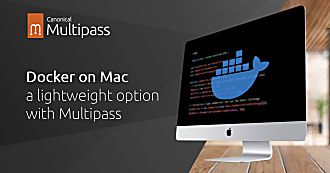Nathan Hart
on 10 May 2022
This week, the Multipass team announced a new version of the VM manager and local mini-cloud. Multipass makes it easy to run Linux virtual machines on Mac, Windows, and Linux hosts by providing a streamlined CLI that abstracts away the admin overhead of working with VMs.
This update comes with some exciting new features, including enhanced networking and suspend capabilities on macOS, and the ability to authenticate clients, which allows Multipass to run as an unprivileged user. Last but not least: this update enables Multipass users to run our 22.04 Ubuntu release, Jammy Jellyfish, on Mac and Windows.

New features
This release is a big leap ahead for those looking to run a local mini-cloud on macOS, particularly on Apple M1-equipped machines. Now, Multipass can connect its instances to additional network interfaces available on the host machine, making them accessible to all networks to which the host machine has access. In practical terms, this means instances on macOS can now be accessed remotely, opening up more possibilities for prototyping cloud applications.
The Multipass team further improved the Linux-on-Mac experience with this release by adding the capability to suspend Multipass instances. While instances are made to be easily created and destroyed, sometimes you just want to pick up right where you left off. With the multipass suspend command, that’s now possible on all platforms.
Multipass also levels up its security with this release by enabling client authentication. This feature makes it possible to run Multipass as a non-admin user, limiting the privileges it will have on your machine.

New look
One last addition with this release, we have a new logo! This keeps us up to date with the recent logo changes across Ubuntu and Canonical products. Look to see it on our site soon.

To see more details on this release, check out the announcement on discourse.
We love to hear from our users, so please join the discussion on discourse to share your ideas and feedback!
If you want to get started with Multipass, you can install it on any system by following the instructions here.



